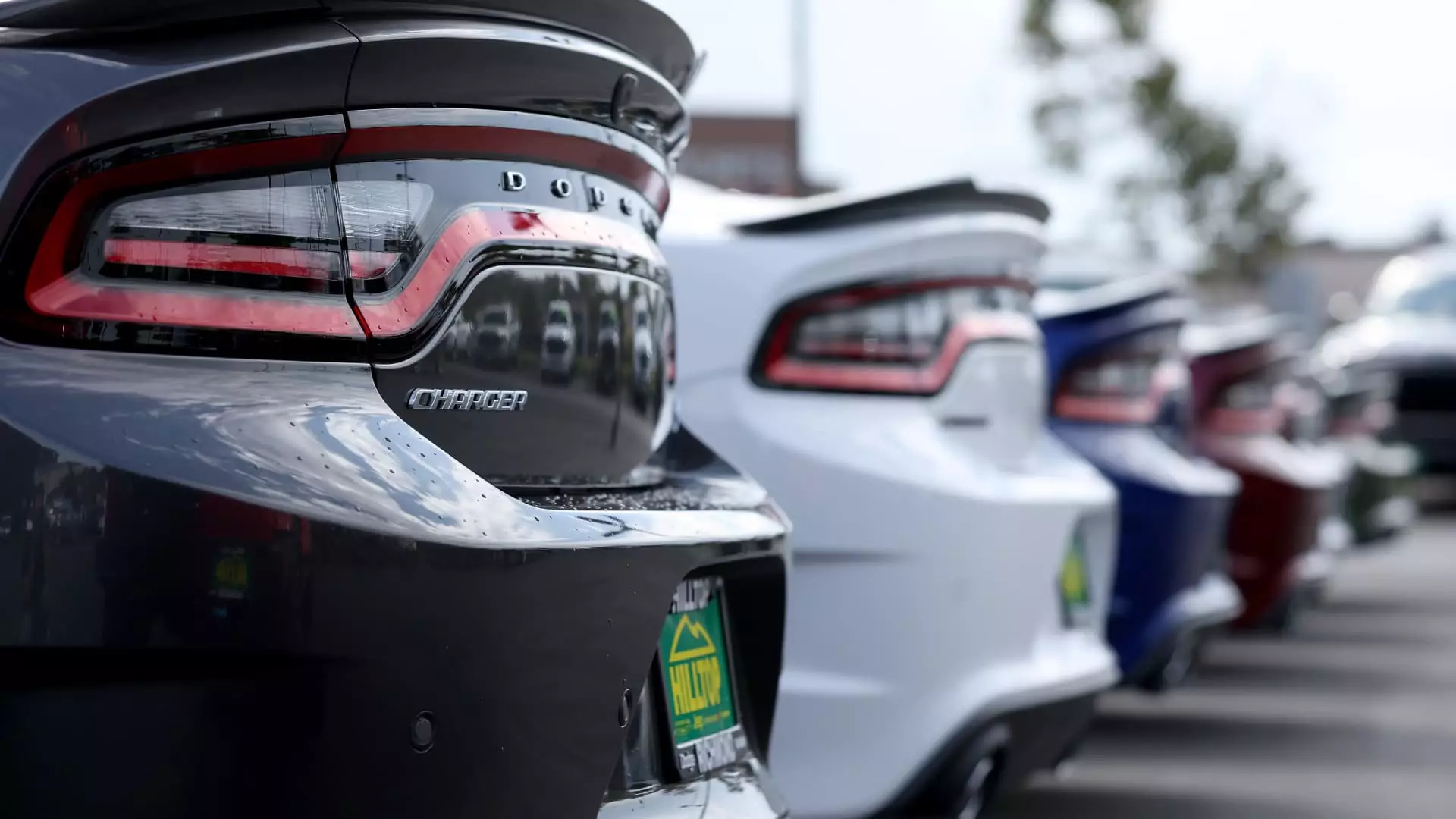The landscape for European car manufacturers is shifting dramatically as reported profit warnings from significant players like Stellantis and Aston Martin have sparked alarms across the automotive industry. With their shares plummeting early on Monday, these companies are not only facing challenges in an increasingly competitive market but also grappling with dire economic conditions, particularly in the world’s most extensive automobile market, China.
Stellantis, the multinational automotive corporation born from the merger of Fiat Chrysler and PSA Group, has dramatically revised its annual guidance downward. The company provides brands like Chrysler, Jeep, and Maserati, which have historically enjoyed robust individual markets. However, recent announcements highlight a troubling shift in global automotive dynamics. Stellantis lowered its expectations for adjusted operating income (AOI) margins for 2024, now forecasting a range between 5.5% to 7.0%, a steep decline from its previous double-digit outlook.
This change isn’t merely the result of internal miscalculations but reflects a broader trend of “deteriorating global industry dynamics,” fueled by heightened competition from Chinese manufacturers and an oversupply in the market. The anticipated decrease in sales across most regions signifies a collective struggle that extends beyond Stellantis itself, manifesting a troubling omen for the entire industry.
A consequential factor contributing to this bearish outlook is the company’s lowered expectations for industrial free cash flow. The predicted range now sits between a staggering -5 billion to -10 billion euros, signaling a severe liquidity concern. This situation can be partially attributed to Stellantis’s strategic decision to address persistent performance issues in North America, although specifics are yet to be disclosed. The company faces increasing pressure from shareholders, who have accused it of fraud regarding concealed inventory levels.
Similar distress tales are echoing from Aston Martin, the luxury carmaker synonymous with elegance and advanced engineering. Citing disruptions in its supply chain, as well as enduring macroeconomic challenges in China, Aston Martin has had to cut its production expectancy by 1,000 units. This reduction not only invokes urgency surrounding its capacity to maintain market share amid a floundering sales environment but also raises questions about its long-term sustainability.
As the luxury market expects high standards for profitability, Aston Martin’s revised projections indicate a significant decline in its earnings before interest, taxes, depreciation, and amortization (EBITDA) for 2024, which is expected to come in below previous figures. The company has also acknowledged that positive free cash flow is now out of reach for the latter half of the year, an alarming indicator of operational distress contrasted against a chiefly optimistic narrative of luxury vehicle sales.
The sharp drop of over 23% in Aston Martin’s share price underscores a palpable panic in the market. Investors are likewise wary, indicated by the shares hitting their worst one-day performance since March 2020. The company’s optimistic statements regarding addressing supply chain challenges and leveraging potential opportunities in China ring hollow amidst the emerging financial reality.
These revelations from Stellantis and Aston Martin are not isolated incidents; they reflect a concerning trend within the European automotive landscape. Just days before these announcements, Volkswagen echoed similar sentiments by slashing its annual outlook. Its operating return on sales estimate suffered a severe downgrade from 6.5-7.0% to 5.6%, further demonstrating that the challenges faced are systemic rather than restricted to a single entity.
Volkswagen attributed its difficulties to underperformance within its passenger car and commercial vehicle segments, compounded by a spiraling macroeconomic landscape. Stock values across the board took a hit, with Volkswagen shares down nearly 3%, serving as a microcosm of the unease gripping investor sentiment throughout Europe.
Furthermore, Europe’s car manufacturers are experiencing palpable pressure from domestic competitors within China, particularly as Chinese automakers venture into the European electric vehicle (EV) market. ING analysts have pointed out that the shift towards EVs poses an increasing threat to European manufacturers who are struggling with inventory levels and sluggish sales that have yet to recover post-pandemic.
The collective profit warnings from Stellantis, Aston Martin, and Volkswagen serve as a wake-up call for the entire European automotive sector. As each company grapples with an increasingly complex global market landscape and evolving consumer expectations, the industry’s trajectory appears uncertain. The challenges of maintaining profitability against the backdrop of intense competition, particularly from China and the shift towards electric mobility, are leaving European automakers at a crossroads that demands strategic realignment and innovation. The road ahead may be tumultuous, but adaptability will be vital in navigating these turbulent times.

